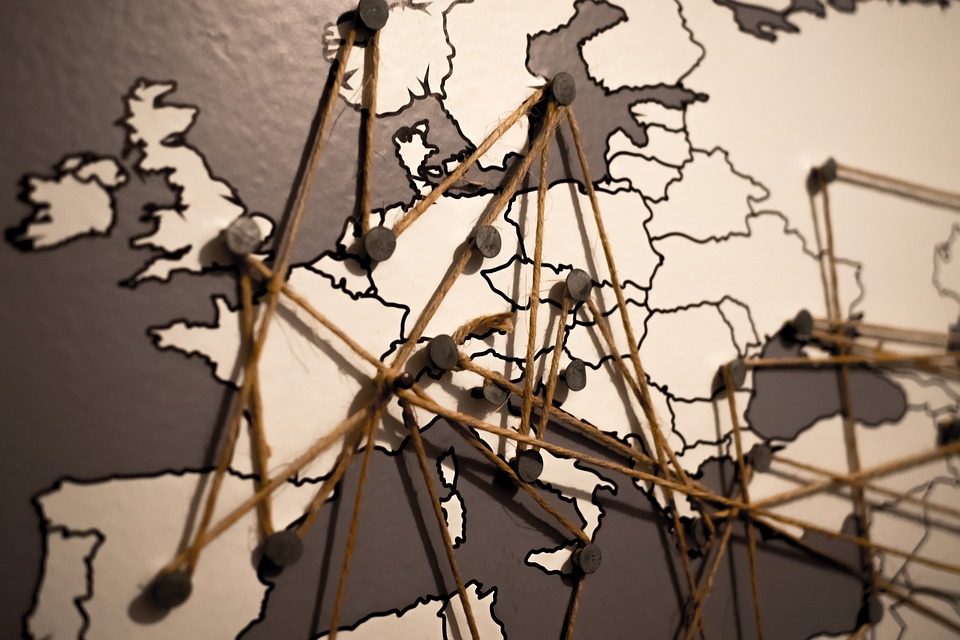These days, more and more businesses are hiring remote staff and contractors to build distributed teams rather than going with the traditional office environment. This has a lot of advantages: it allows you to save on office costs and overhead and provides a flexibility and dynamism that traditional office environments often lack. Distributed teams carry their own set of challenges, and here at Cad Crowd we can help you solve them. We’ll also connect you with the best freelance designers on the web who can make up that team.
First off, what is a distributed team?

A distributed team is simply a workforce that doesn’t share an office space. Believe it or not, they actually far predate the internet – the Hudson Bay Company used a distributed workforce for between 1670 and 1826, the years of the fur trade. They believed that the key to managing a distributed team is combining trust and control as mutually reinforcing elements. The following challenges will help illustrate this duality.
1. Building Social Cohesion
Social cohesion is perhaps the biggest challenge of managing a distributed team. One of the best predictors of how much people like each other is how much they see each other. This is called the propinquity effect. As most managers know, a good social rapport is the best professional lubricant, allowing a team to work through problems and get along even when the going gets rough. How does a manager overcome the obstacle?
While there’s no perfect replacement for face-to-face interaction, modern technologies can provide the next best thing. Video chat services like Skype, Google Hangouts and Zoom can let the team get to know each others’ face and voice, providing a personalistic feel that helps people feel like they’re getting to know each other. Services like Slack are also useful for allowing your team to communicate on the job, in real time. If you find your employees sharing memes or joking around on video chat, don’t discourage this – it means you’re succeeding in building a positive company culture!
2. Institutional Memory
Institutional memory can be defined as the collective knowledge held by an organization. In traditional office environments, institutional memory is often stored in the minds of individual employees and in written manuals. Having an organized system of institutional memory – and a clear way to pass it on – are key to an organization’s success.
Distributed teams, which tend to have a stronger online structure than traditional office environments, offer unique challenges and benefits when it comes to institutional memory. Distributed teams tend to be more fluid and dynamic, so having one employee who knows how to do everything might not be the best solution. Written instructions and welcome documents could come in handy. Also, the online nature of distributed work lends itself to alternative forms of teaching material and record keeping – think videos, visual graphics, Google Docs and other tools.
Consider that due to the dynamic nature of projects involving a distributed team, institutional memory might not be as important – you may find that each day the work your team does tend to be different, less repetitive than work in office environments tends to be.
3. Communication Building
This one can be a doozy. When people spend 8 hours a day together in an office, they generally learn to communicate. Also, they (necessarily) will tend to be people who live in the same region, so will share some cultural basis. Your distributed team might hail from across the globe, and while a global team brings many benefits (including a variety of ideas that you might miss out on if everyone on your team lives in the same American city), it can also pose challenges. Communication problems might be blamed on cultural differences, and you never know when xenophobia might rear its ugly head.
So how do you address communication issues in a distributed environment? It’s a good idea to carry out two kinds of video meetings: Daily and retrospective ones. In daily meetings, everyone gets the chance to share what they’ve been working on and to ask questions about their colleagues’ work. It’s a way to make sure the team is staying on track and to continually update each team member’s “microgoals.” While the environment should always remain appropriate and professional, don’t shy away from friendliness and humor – social interaction is, after all, communication gold! Retrospective meetings are a way to take a step back and look at the “big picture”: what’s the overall goal, and is our general strategy helping us attain it?
It’s also a good idea to appoint a rotating facilitator. This is someone who keeps the meeting on track, ensures everyone gets equal speaking time and makes sure everything on the agenda gets covered. Rotating this role helps foster group cohesion, and gives everyone a chance to practice their leadership skills.
4. The Black Box Effect
In a distributed team, there’s always a risk of team members viewing each other as “black boxes,” to whom you send an input and get an expected output. This may work for a short time, but ultimately, people are people, and the team needs to understand this if it’s going to succeed. This means understanding slowdowns and delays, and being flexible to them. It also means being accountable to others on the team who might be waiting on you. The team must be able to work together as a unit and stay focused on the project’s overall goals, rather than just their individual ones.
Retrospective meetings are a great strategy for accomplishing this. They help team members not only see the “big picture,” but also get excited about it. Your team should understand what you’re trying to accomplish and why it matters. If there’s a holdup or problem, their attitude shouldn’t be “it’s not my problem, so I’ll just sit back and let someone deal with it” – it should be “what can I do to help?” Think cooperation and support, rather than siloing and mechanization.
Another way to help your team work together is to organize company retreats. These can be an excellent way for everyone to get to know each other in person and to get a “feel” for each others’ personalities. It’s also a great opportunity to carry out cooperative games and exercises, to help your team learn to work as a unit.
5. Co-worker Access
One of the great advantages of distributed teams is that everyone can make their own hours – your graphic designer prefers to work in the middle of the night? No problem!
Except that it might become a problem. Even though your team is remote, with no clock to punch in and out of, you still might want to consider fixed schedules, especially if you’ve got several people working on the same project. If employee X has to wait twelve hours for an email response, and then won’t be around to reply for another eight hours, your project pace could slow to a crawl. Consider “partial schedules,” where your employees have mandatory times where they must be available (akin to “office hours”) but are free to carry out the rest of their work at their convenience. Distributed teams allow managers to come up with innovative ways of balancing structure and flexibility. All this would be impossible within a traditional office environment.
Like what you’re reading? Let Cad Crowd help you to design your very own distributed team! Save money on overhead by harnessing the full power of the internet. We’ll help you come up with a top notch team of staff and contractors to make your vision a reality. Find out more today!

